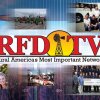USDA is set to begin accepting applications for an expanded Emergency Livestock Assistance Program on Monday, July 1st. The move is an effort to help dairy producers offset milk losses caused by High Path Avian Flu.
U.S. Secretary of Agriculture Tom Vilsack made the announcement, outlining the details for eligibility.
“Farmers will receive a payment at a 90 percent coverage of loss production retroactive to the date of March 2024 of their first positive herd. To be eligible for H5N1 milk loss assistance under ELAP, the adult cow must be a part of the following: must be a part of a herd that has had a confirmed positive H5N1 test from the National Veterinary Service Laboratory; must have been initially removed from commercial milk production during the 14-day time period before the sample collection day for the positive H5N1 test date 220 days after the sample collection date for the positive test; has to be milk-producing, lactating, and maintained for commercial milk production beginning date of the eligible loss condition; producers must also have risk in the owned, purchased, or having been a contract grower of an eligible adult cow for at least 60 days before the beginning of the production loss to essentially participate in this program.”
Infections in detected herds have now taken place in 12 states across the country. To apply, producers are advised to contact their local Farm Service Agency Office.









